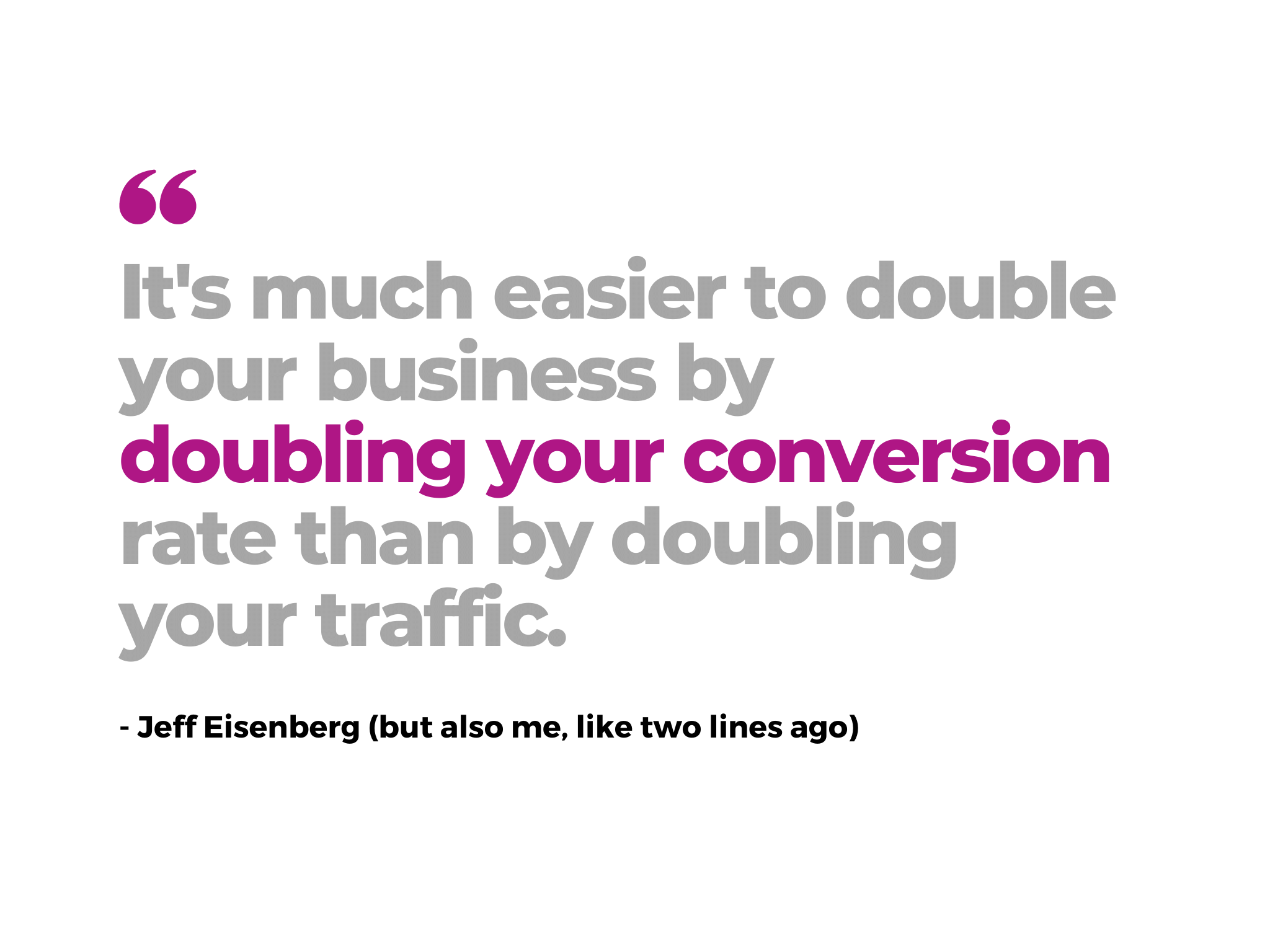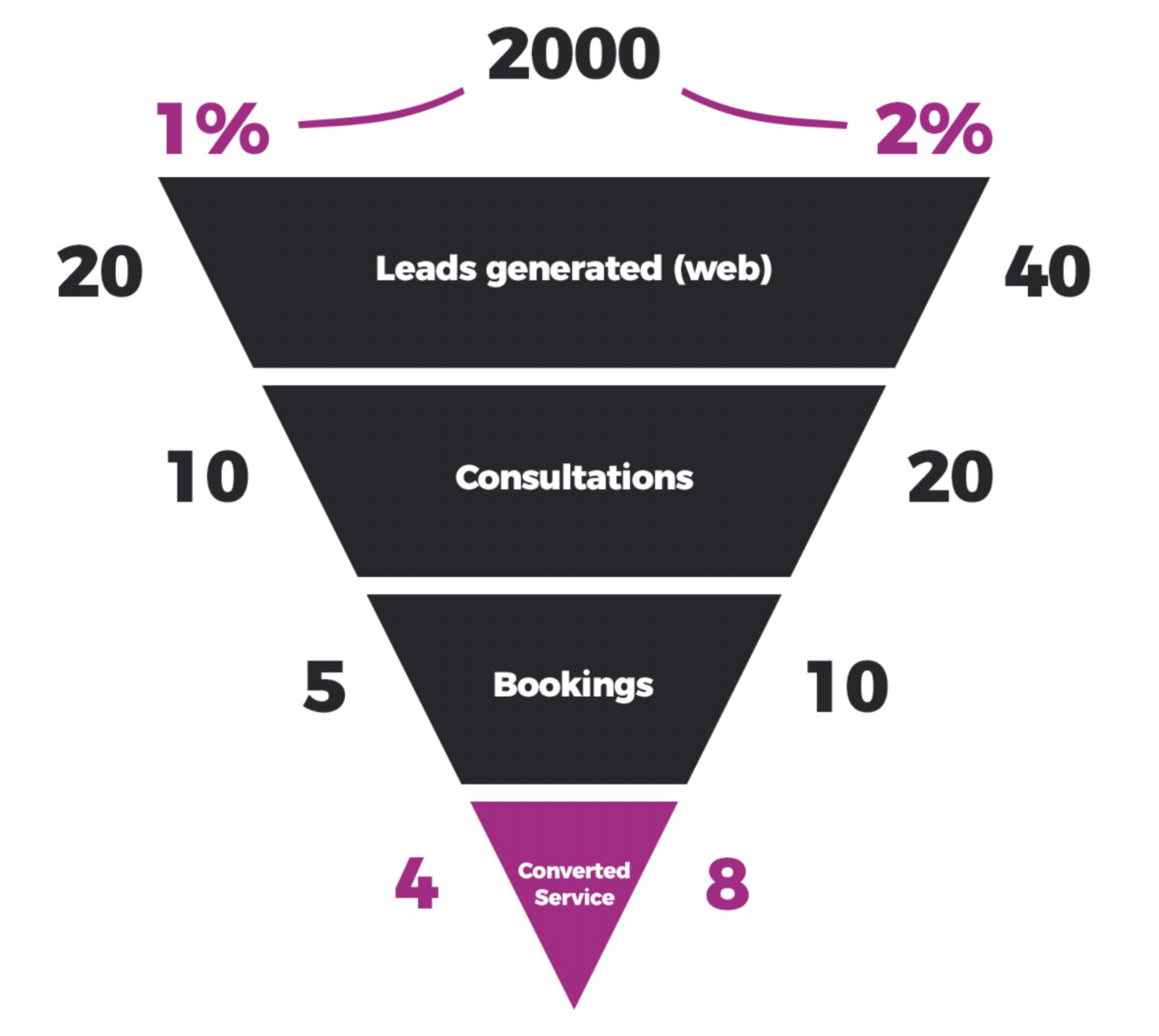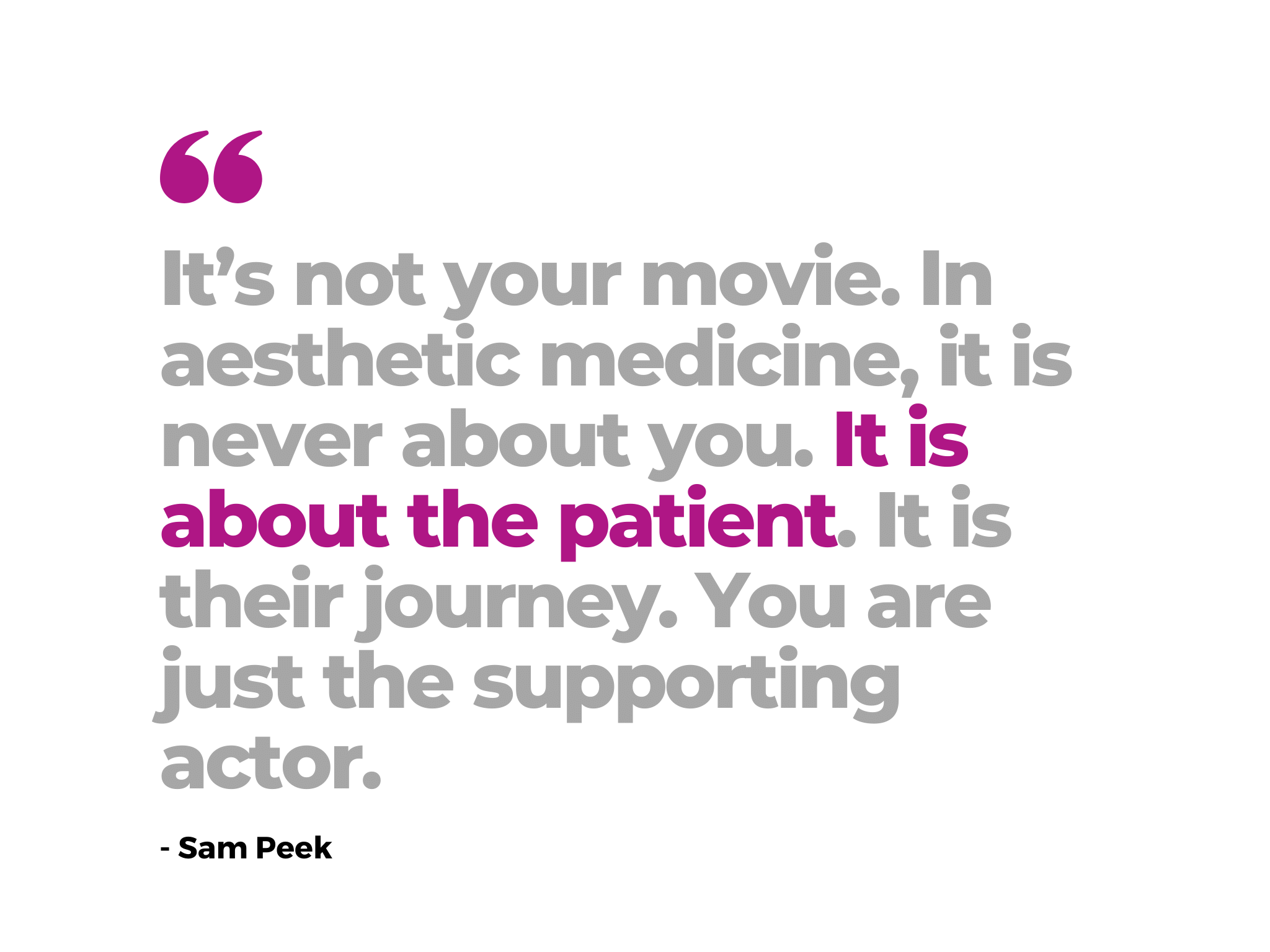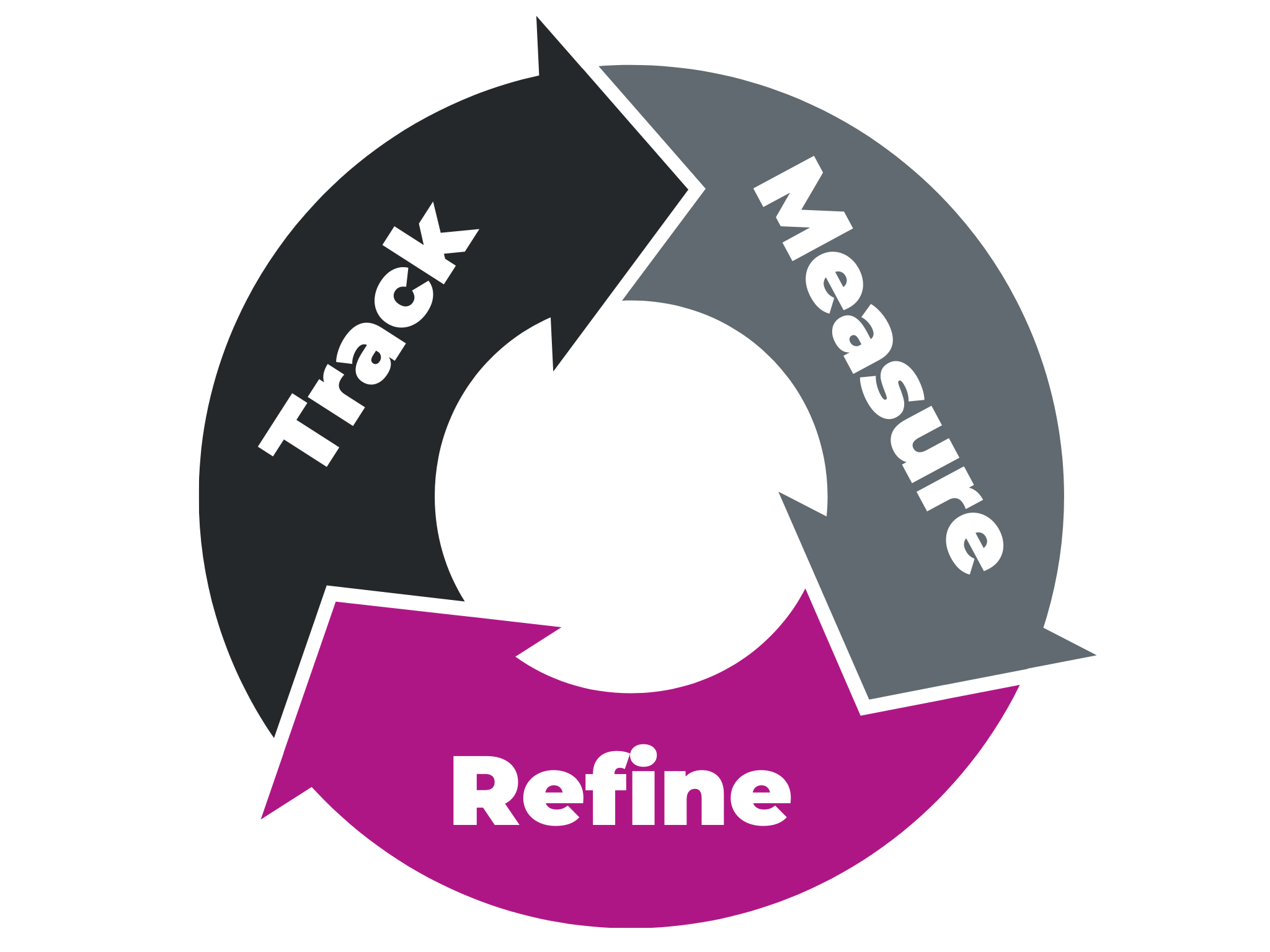Busy chatching up on The House of the Dragon? Read our 60-second TL;DR.
Does your medical website suck?
Probably not, it’s 2022. Although we don’t have flying cars, we have mastered the art of building a website that doesn’t suck. At least from a basic standpoint.
If I had a nickel for every time a marketing article listed the same obvious website mistakes that everyone already knows, I’d be rich. Actually, factoring in inflation and the current economy being in a recession, I’d have enough money to buy a Double-Double from In-N-Out with animal-style fries and a chocolate shake. Yummm …

Sorry, back to the point. In the age of too much information and not enough time, we don’t need to learn about the things we already know.
Bad CTAs, not mobile friendly, slow loading speeds, bad branding, bad UI and UX, not optimized, not enough content, etc. etc. etc. Yeah… we already know! My 12-year-old niece already knows.

But hey, at least they get their SEO credit and rank for those common search terms. Does that actually help anyone? NO.
But what would actually help you? Converting patients, that’s what.
And it’s also what we are going to cover in this article. Mistakes you are making that prevent you from converting more patients.
Don’t worry, we’re not going to chase the low-hanging fruit like everyone else. We’re going to tackle the issues that really make a difference in the success of your website and the conversion of visitors into patients.
Here’s what we’ve learned from launching hundreds of aesthetic medical websites (and counting) in the past two decades. But first, is it even worth it?
Does My Aesthetic Medical Website Still Matter?
Understanding the Power of 1%
Have you ever thought about the power of increasing your website conversion by just 1%?
Sometimes, the smallest changes can have the largest impact. 1% can equate to hundreds of thousands of dollars, euros, or pounds of additional revenue! Increasing your conversion by 1% can change your overall business, without even adding a single additional visitor.
It’s a lot harder to acquire new website visitors than it is to convert the ones you already have. Improving your current site to provide the user with a great experience that will vastly increase their chances of calling, emailing, or clicking that “book appointment” button.
Oh, God. You do have a “book appointment” button, right? 😬

Let’s do the math:
If each new patient is worth $10,000 to your practice and you have about 2,000 new visitors to your website per month, that would equal about 4 new converted patients per month based on the industry standard website conversion rates.

4 additional patients per month:
Each patient is worth $10,000
12 months in a year
4 x $10,000 x 12 =
$480,000.00
Crazy, right? Just the smallest, 1% increase in website conversion can increase your revenue by almost half a million dollars per year. And you’ll be pocketing an extra 7 figures with a 2% increase. By fixing the big mistakes that aesthetics websites make, just imagine how much you can actually increase your revenue.
But that doesn’t answer the big question. With all the other marketing platforms out there, do you really need a website at all? The answer is a resounding yes!
The Digital Marketing Tree

Think of your digital marketing mix as a tree.
The foundational marketing aspects (or the roots) are things like strategy, research, branding and content.
The growth from the tree (or your branches) are things like social media marketing, email marketing, PR, online ads and SEM. And the leaves would be things like blogging, SEO, event marketing, print marketing,, reputation management and more.
But the thing that supports it all, that’s your trunk. That’s your website.
Your website is the foundation for everything – it’s your marketing HUB. It’s where you drive leads and where those leads are converted into patients. It’s where your educational content lives and the only way to build authority in search results. It’s where your potential patients go to learn about your practice, your treatments and your expertise.
Without a website (that converts) your practice will fail in today’s digital world.
5 Most Common (And Most Critical) Website Mistakes
1. Skipping the Strategy Stage
Not strategizing is setting yourself up for failure.
If you’ve read almost any of the articles we’ve written, you know that everything in digital marketing begins with strategy. Believe it or not, you should spend almost as much time strategizing as creating, if not more.
Depending on the scale of your website, the strategizing stage can take days or even weeks before you ever even begin. And strategy doesn’t stop once you begin developing your site. Every aspect of building your website along the way requires its own sub-strategy and there are also plenty of opportunities to restrategize when things aren’t working as you had originally planned or when your website isn’t converting patients.
Every strategy should have, at the very least, 4 main components.
Defined Goals
Every strategy should have a defined set of goals. You may think that those goals are obviously to convert visitors into patients, duh. But when creating a website for your unique practice, the question isn’t what, it’s how.
Nothing is plug-and-play, there is no template to follow for your practice. Just like every patient has a different journey, so does every practice. Here are just a few of the standard practice types.
Education:
Your practice may be heavily focused on education, so you would build your medical website to inform your patients starting from the homepage to your procedure pages. Here’s an example of a great website that focuses heavily on education. They also happen to have kick-ass design.
Expertise and Accolades:
You may be one of those practices whose doctor has every board certification, has been featured in news and magazines and may even be TikTok famous! In that case, you’ll want to strategically build your site to flaunt those awards, accreditations, PR features and focus heavily on your doctor. Here’s a site that shows off it’s accolades very well.
Aesthetic:
Some practices want to create a feeling. They may want to target a certain high-end clientele that wants to feel like they’re in the hands of a true artist. That website journey would look much, much different than others. Dr. Lee’s website does a fantastic job of exuding simple sophistication.
These are just a few samples, but like I said before, every practice is unique and has a very different journey – so should your website. And you should plan that journey out very carefully. With a proper strategy in place, your sales funnel will be much better and lead to a much higher conversion rate.
If you didn’t read the 1% portion above, go read it now!
Target Treatment(s) Strategy
As a medical practice, you should know which procedures are your bread and butter. Whether that be because it’s the ones you’re really good at, the ones you’re known for, or the ones that bring in the most cheddar!

Those procedures are the ones you’re going to want to feature front and center on your site and they’re the ones you’re going to want to create the most education and content around.
It’s simple, the more you write E.A.T. content on the services you want to drive the most traffic to, the higher you’ll rank on search engines for that content. Who knows, you may even gain position zero on search engines. The holy grail of search engine rankings.
But remember, getting them there is only half the battle.
Even more important than rankings: the content you create around your target services is what helps convert website visitors into patients. And not just written content, it can be videos like testimonials or even recorded treatments. It can be before and after photos with details on the treatment, outcome and recovery times. It can even be an infographic explainer on the process of your service. The more content around your target treatments, the better.
If you skip the strategy stage and simply template your site with no focus on your “money” treatments, then they all get equal treatment and your allocation gets evenly spread which greatly affects your ROI.
Target Audience Strategy
This should be a no-brainer. If you don’t strategize your website to meet the needs of your target demographic, you’ve lost the war before it’s even begun.
Just imagine going to an aesthetic medical website looking for a facelift and seeing images of young, 26-year-old Instagram models. Mortifying.
Yes, a pretty obvious example, but the point remains the same. As a practitioner, you should know all the intricacies of your target audience and be able to strategize your user experience to meet their unique patient journey.
Competitor Research
Do you need to do competitive analysis? Yes
Do you need to spend a ton of time on it? Not necessarily.
The reason why is twofold:
- You should already know your competitors. Unless you are opening a new practice in a new area, most practitioners already know the competition around them. The usual suspects if you will. And whether you’re friends or foes, you should have a good idea of what they offer, what their strengths are and what their weaknesses are.
- Your main focus should be on you. While you should always research and know your competition, sometimes too much focus on this can lead to your practice keeping up with the Joneses. Don’t keep up with the Joneses, be the Joneses. Try to focus more on what you’re good at, what your strengths are and what your weaknesses are.
So when it comes to competitor research, although this is an absolute must. Don’t put more time into it than is necessary. Use it to look for areas of opportunity.
A competitor’s site may have a terrible user experience. Maybe take this opportunity to make sure your website is sleek, sexy and has a nice natural flow for your visitors.
A competitor’s site may be sleek, but completely lacking content. This is where you can strategically ensure that your site is full of rich, valuable content to ensure that any potential patients are comfortable, well-informed and know that you are the authority in your field.
Or heck, a competitor’s site may be fantastic all around, but focus on certain procedures that you’re not interested in pushing heavily. This may be an opportunity to let them have their win(s) and put your focus into the procedures you want to win.
Who says everyone can’t win?
2. Creating a Site for Yourself Over Your Patients

It’s easy to get caught up in what you want, but always remember it’s about your patients. Here are some common mistakes that practices make when creating an aesthetic medical website.
Doctors Writing for Doctors
This is a much more common mistake than you’d realize.
We get it, you’ve spent the better part of your life in medical school and in the field perfecting your craft – you want to share all the knowledge you’ve accumulated. But remember, it’s not your colleagues who are going to visit your site, it’s your patients.
Okay yeah, if you created an incredible site, you’ll want to show it off to your colleagues, but they don’t pay the bills.
You need to ensure that the education you provide on your site is written at a level that they can understand. Don’t worry, we know you’re a smarty pants, feel free to throw in a jargony word or two.
Different Types of Content Consumption
Just because you consume content a certain way doesn’t mean that everyone else does. Some are textual, visual, or auditory content consumers.
There are even different types of content within each of those categories. Some textual consumers can like long-form content and others do better with listicles. Some visual content consumers love videos, some love imagery and some do better with graphics.
You may love textual, long-form content, but creating a medical website with only that type of content alienates a large portion of your visitors and decreases your chances of converting them considerably.
Every website should have a good mix of everything listed above to appeal to a wide audience of content consumers in today’s digital world.
Information Overload
Again, we understand that you are bursting with knowledge in your field and just can’t wait to shout it to the masses, but that can be the quickest way to lose a potential patient’s attention.
Your website visitors don’t need to know the wavelengths and frequencies your lasers emit, they want to know what it does, how it will help them and why they should get the treatment.
3. Optimizing for the Past, Not the Future
Algorithms are always changing and evolving and old optimization strategies don’t work. It’s important to keep up with the latest trends in search, analytics and consumer behavior.
Keywords
For a long time, a simple “SEO hack” would be to just riddle your content with keywords and long tailed keywords and call it a day. Google would look at it and think “They said ‘breast augmentation, Sprint TX’ a bunch of times and a bunch of different ways, let’s rank them high for breast augmentation in Spring Texas.”
Well that’s just not quite how it works anymore. Google’s algorithm is lightyears ahead of what it used to be and improving every day. It’s now able to decipher between keyword spraying and pages that are providing true, valuable content.
This is what they call writing for E.A.T. (Expertise, Authority and Trust) and it’s especially important in the medical field because it is a YMYL (Your Money or Your Life) industry. Simply put, Google holds the information provided on Medical pages to a much higher standard than others. In general, it rewards those pages that provide the most value with the highest rankings.
Ultimately, your goal is to have a website whose content is of the highest quality and provides the most value to search users. Not only can this rank among the top results, but a strategic content plan can even get you the ever elusive position zero. Otherwise known as a snippet.
Optimizing for Voice
The world is changing, but one thing remains the same. Humans are lazy.
In the age of information, the next evolution of that laziness is voice search. Whether it’s your cell phone, smart watch, tablet, computer, or smart speaker. All of our devices have the ability to give us access to an infinite library of information without ever lifting a finger.
But have you ever thought about how this affects your website?
There are a number of ways to optimize your website for voice search results:
- Natural language – Searches are a conversation with a virtual assistant because people ask full-sentence questions when they use voice search devices. You would want to rework your writing to be more conversational, whether it be in your titles, headings or body paragraphs.
- Site Speed – The average page for voice search results loads in approximately 4.6 seconds. Not only do consumers have historically short attention spans, but voice users expect an instant response on voice searches so fast-loading sites are prioritized to provide the quickest responses to voice users.
- Authority and Page Quality – Domain authority is vital because there’s a consumer expectation that voice search results should be accurate. In fact, with voice search results, you have one shot. This means that the information in the results is expected to be the #1 most accurate result possible.
- Local Information Optimization – One of the simplest and most important things you can do to optimize for voice search is ensure your NAP (Practice Name, Address, Phone number) are correct across all web presence.
- Question-Based Content – Quite literally every voice search query is a question. Create other content to address users’ questions. This includes videos, blog posts, before and after photos and FAQs.
- VUI (Voice User Interface) – Historically, a website’s UX banked on GUI (or Graphical User Interface) for visual interfaces. This is quickly being replaced by the VUI (Voice User Interface), which acts as a reciprocal interface between the command medium and the user.
- Mobile – When you think of voice search, you probably tend to think of devices such as Alexa and Google Home, but 27% of the global online population uses voice search on their mobile devices. Make sure things like directions to brick-and-mortar locations and XML sitemaps are readable to visitors and search engines on your website.
Google Analytics 4
Analytics tracking will be changing for good in July of 2023 when all websites will be required to switch to Google’s new GA4. Don’t worry, we’ll be writing an article on everything that’s changing and how it will affect your aesthetic medical website.
When strategizing your website, the new event tracking system and other factors like cookie-less tracking tools are important to keep in mind when ensuring your website is built to not only convert visitors into patients, but track their journey.
The Goldfish Conundrum
A site chalked with written information may have been good a decade ago, but your visitors have an ever-shrinking attention span and need to be constantly engaged or you’ll lose them. A nice mix of information and other forms of content like imagery, videos and graphics will do much better at converting visitors to patients.
There are a number of other factors that used to matter and no longer do, or vice versa. It’s important to make sure that you’re keeping up with the latest trends in search, analytics and consumer behavior to make sure you’re not making mistakes on your medical website and losing out on valuable search rankings and conversions.
4. Ignoring the Technical Side
The ‘backend’ of your medical site will always be the least sexy, but most important part of your website’s success. It’s easy to get caught up in all the “fun” parts of building a website – design, content, conversion funnels, etc. But none of that matters if search engines can’t find you and if your site doesn’t function properly.
I could write endless content on the deep technical side of building a website, but let’s face it, most of it won’t make any sense and I’ll have just made the very mistake I told you not to make in number 2. We’re marketing experts, so it would be easy to write for other marketing experts, but as I said in the beginning, we’re here to create value for medical experts.
We’ve worked alongside the medical field for many years, but that doesn’t mean we know the intricacies of performing a rhinoplasty.
Some of the main components of the technical side of your medical site are your site map, metadata, alt text, linking, crawling, indexing… okay, I’m losing you. Maybe I can explain how to optimize all of your content – written, photo, video, audio, imagery, graphics… Okay, I’m gonna stop here before all is lost.
Let’s just put it this way, for these types of things, it’s always best to hire a professional.
After all, you wouldn’t want a prospective patient to try to perform their own rhinoplasty, right?

(Maybe you would, if revision rhinoplasty was your bread and butter. Who knows.)
5. Not Having a Post-Launch Plan
A website isn’t set it and forget it, it’s a living breathing thing. Not only should it be updated regularly with the latest information on your practice and your services, but it should also be continuously optimized for conversion.
Continuous Content
Google loves fresh content. It knows when a site has gone stale and penalizes those sites accordingly. You need to constantly be creating new content, updating your information and making sure those pages are crawled and indexed regularly.
Even more important than Google is your website visitors. Your site should always be updated with the latest information. If you start offering a new service, it needs to be up on your site immediately. How are you expected to sell a service that potential patients don’t know you offer?
The same goes for the other way around, if you’re no longer offering service, make sure it’s removed. How annoying would it be for a patient to come in for a service that you no longer offer because it’s still listed on your site. Bad review loading…
But this seems obvious, right? Wrong.
Go check your medical website right now. I’m willing to bet that there’s at least one service you offer that’s missing from your site or at least one service you no longer offer still sitting in your menu.
Am I right? Be honest. About 90% of aesthetic medical sites have out of date service information.
Ongoing SEO
So you created the perfect website and sprinkled all your SEOs on it. Boom, done. Right? Nope. SEO is an ongoing process.
Think of it as a never-ending war. No, not the hundred years’ war, this one is truly never-ending. In this war, all your competitors are battling for position 1 on search engines. Just because you made it to the top of the hill, doesn’t mean the battle is won. Your competitors will keep coming to the front lines with new SEO techniques, aggressive linking strategies and fresh authoritative content. You have to make sure you’re keeping up to remain at the top of the mountain.
Conversion Improvement
Finally and more importantly, you need to make sure you’re always improving your conversion funnel. It’s as simple as three steps:

Track
Studying heat mapping on your website will tell you the journey most visitors take on your website and what actions to take to improve that path and lead them down the sales funnel to increase conversions.
Measure
Your website analytics can provide a lot of insight into what pages are performing well and where your best conversions are. A general rule of thumb is to review all of your analytics at least once a quarter to see what’s working and what can be improved.
Refine
What are insights without action? By tracking and measuring your patient’s journey and website performance, you’ll find tons of valuable information that most would never realize. Use this info to improve your patient journey, content, UI, UX, calls to action and more.
If you are executing a proper post-launch plan, your website will continue to improve in rankings, website traffic and most important of all – conversion.
Remember the Power of 1%
Never forget that the smallest changes can have the largest impact. This small yet powerful number can have the biggest impact on your success. Increasing your conversion by 1% can change your overall business, without even adding a single additional visitor.
By avoiding these 5 common aesthetic website mistakes, you’ll be adding more potential patients to your site AND making sure that your site is converting at the highest possible rate.
TL;DR
Fact – your website is the most important part of your marketing mix. Your medical website probably doesn’t suck, but it’s also probably not converting visitors to patients at a rate you’re happy with.
Avoid these 5 aesthetic medical website mistakes to increase traffic, rankings and patient conversion:
- Skipping the strategy stage
- Creating a site for yourself over your patients
- Optimizing for the past, not the future
- Ignoring the technical side
- Not having a post-launch plan
Increasing conversion by just 1% can lead to hundreds of thousands of dollars in increased revenue per year, without adding a single new visitor.
If you’re having trouble figuring out where to start with a new website, or how to improve your current aesthetic medical site, feel free to give us a ring at (800) 949-0133 or reach out to one of our educators to schedule a one-on-one.




